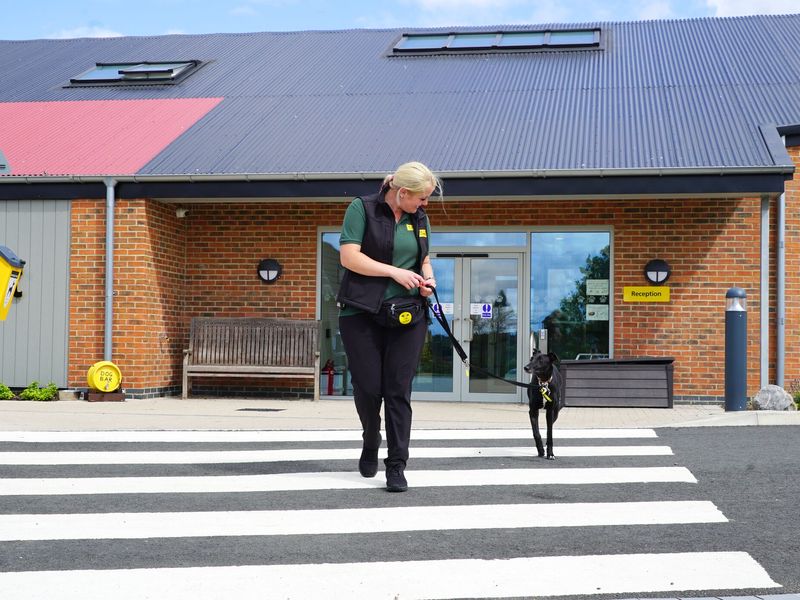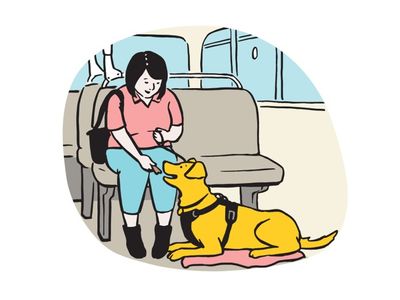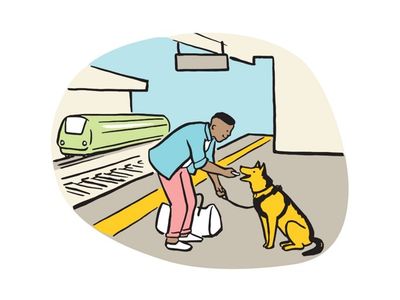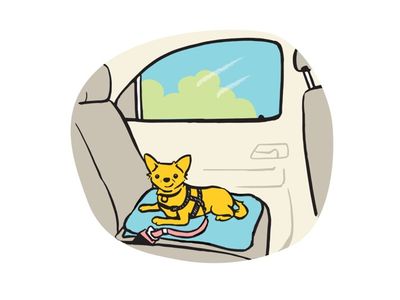How to travel on public transport with your dog
Training your dog to use public transport can open up a whole vista of new adventures.

Public transport can open up a whole vista of new adventures for you and your dog, especially if you don't have a car.
Dogs thrive on new smells and sights, so using public transport to take them to a new park or walk somewhere exciting can be a brilliant adventure for your dog. If you live in a city or town, public transport can be an easy way to access rural open spaces outside town for your dog to explore.
Using public transport might mean you can take your dog with you when you otherwise might not be able to. We'd always advise you to never leave your dog home alone for longer than they can cope with, and remember that they will need to go to the toilet approximately every four hours. If you're going somewhere dog appropriate, why not take them with you?
Why travelling on public transport isn't for every dog
Just as some humans are happier travelling than others, for dogs, travelling on public transport can be a stressful and scary experience. It's important that you consider your dog's needs and welfare before travelling.
Sometimes, public transport isn't an appropriate method of transportation, for example after an operation at the vet, or when it's hot.
Skills for travelling on public transport
There are lots of basic cues and skills that your dog should have mastered before you travel on public transport with them. Learning these will not only make your journey much easier but also ensure a more enjoyable, safe and calm experience for your dog. Discover the key skills to master.
Sit
Sitting by you is a key skill to know before starting to go out and about into the world.
Lie down
Knowing when to lie down will ensure your dog feels more comfortable while travelling.
Settle
On a busy train, bus or tram with lots of distractions, it's particularly important that your dog knows how to settle themselves.
Leave it
Public transport is likely to be filled with lots of distractions, including people eating, and rubbish. Ensuring your dog knows when to leave something will provide you with peace of mind.
Focus
Getting your dog's focus and attention on you is very useful while you're out and about. Master this, and you'll both feel much more confident and ready to go into the world.
What to consider when travelling on public transport with your dog
Mode of transport
Don't always assume all modes of public transport accept dogs, and if they do, there may be certain rules you have to follow. Always check with your transport provider before making your journey to ensure that dogs are allowed.
Factors to consider
Ticket barriers: However small and agile you think your dog is, always take your dog through the accessible ticket barriers. This gives your dog more space and time to get through.
Time of day: Have a think about the time of day you will be travelling with your dog. It is always easier to travel with a dog when public transport is less busy. Crowds and small spaces can be very stressful for dogs.
Remember:
- By law, assistance dogs are allowed on all modes of transport and it is an offence to refuse entry to a person and their assistance dog.
- You are responsible for keeping your dog under control at all times, whether on public transport or not.
- Not everybody loves dogs as much as we do, and sometimes you might come across someone who would rather not sit next to your pooch.
What to take with you
When travelling with your dog on public transport it's important to remember to take anything your dog might need with you:
- Water: public transport can be hot whatever time of the year, so it's important that if you're travelling you take water and something for your dog to drink out of.
- Dog poo bags: Hopefully your dog won't need to go while you're on the bus or train, but you should always be well stocked with poo bags.
- Treats: We fully believe in reward-based methods, so it may be useful to have a stock of treats for when you need to ask your dog to carry out a command. If you're taking a longer journey, you may want to consider taking an activity-based treat, such as a Kong, or snuffle mat, to keep your dog occupied.
- Meals: If you're going to be travelling all day, then remember your dog will need their usual meals.
How to train your dog to travel on public transport
How to train your dog to travel on a train, bus or car
Before you get started, make sure your dog has mastered the basic skills they'll need. Then head to the train station, bus stop or whichever mode of public transport you'd like to start training them with. Make sure you have plenty of tasty treats handy, as well as some water. Remember, always go at your dog's pace and go back a step if your dog seems anxious or uncomfortable.
Introduce them to the new environment
Start to build a positive association with their new environment by rewarding them by giving them a treat or some praise every couple of seconds for being calm.
Reward as the train or bus approaches
As a train or bus approaches and moves away, give your dog plenty of treats so they continue to build on that positive association.
Practice during quiet times
Once your dog is comfortable with the train or bus approaching, you're ready to get on. When you first start training this step, go to a quiet platform at a quiet time of the day.
Keep rewarding them to make sure it's a positive experience and keep the …
Build up journey times
Once your dog is comfortable on short journeys, start to build up the journey times. Start gradually at first, and build up to longer journeys.






